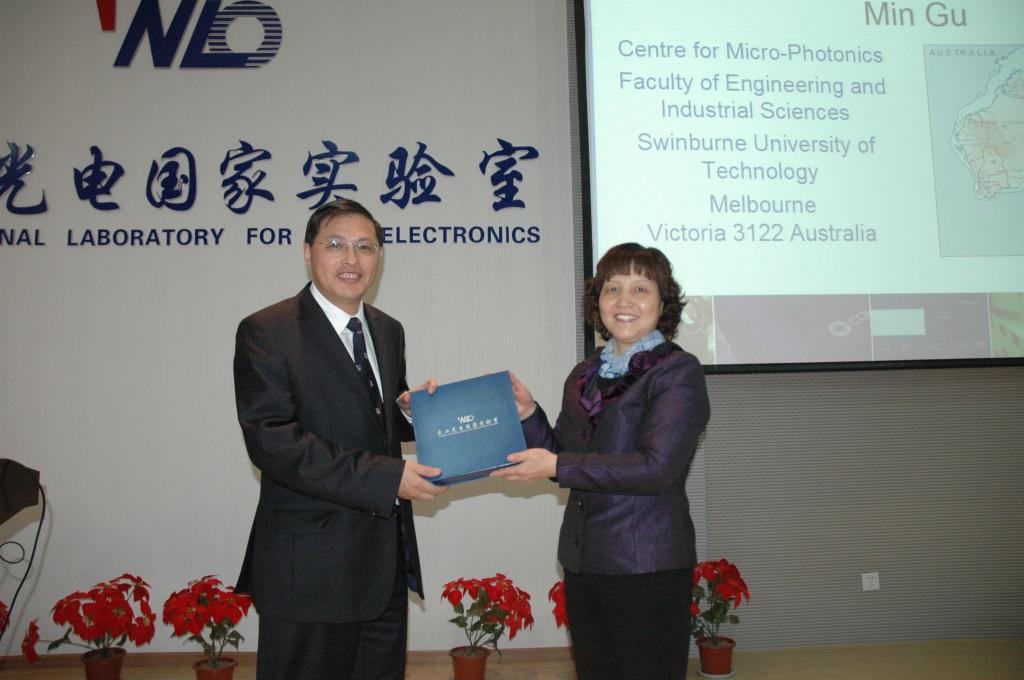Title:Transformational nanophotonics
Speaker: Pro.Min Gu
Time: April. 01. 2011,16:15PM
Venue: Room A101 At WNLO
Abstract:
The revolutionary inventions of optical fibre and charge coupled cameras, which were award the 2009 Nobel Prize in physics, reveal the unequivocal impact of photonics. Photonics, a discipline in which photons rather electrons are studied and used, has transformed massively our everyday life and global economy for a sustainable future. Nanophotonics, defined as nanoscale optical science and technology, is a new frontier in photonics. The nanophotonic endeavours on information technology, green energy, early cancer detection, cellular engineering, and clean water resources are providing a better environment and a healthier life to our community. In this presentation, I will present our recent nanophotonic progress on five-dimensional optical data storage, nonlinear optical endoscopy, and nanoplasmonic solar cells.
Biography:
Professor Min Gu is a Laureate Fellow of the Australian Research Council, a University Distinguished Professor and Director of the Centre of Micro-Photonics at Swinburne University of Technology. He was appointed as Pro Vice-Chancellor for International Research Collaboration (IRC) at Swinburne in 2009. He is an elected Fellow of the Australian Academy of Science, the Australian Academy of Technological Sciences and Engineering, the Australian Institute of Physics, the Optical Society of America, the International Society for Optical Engineering and the Institute of Physics (UK).
Professor Gu has conducted many pioneering projects in the area of bio/nanophotonics. He is a sole author of two standard reference books and the first author of the book published by Cambridge University Press in 2010. He has over 800 publications (over 330 papers in internationally refereed journals including Nature and Nature Photonics) in nano/biophotonics. His work has been featured more than 2000 times in media reports including Nature Photonics, Nature Nanotechnology et al. His inventions in five-dimensional high-density optical data storage, nanoplasmonic solar cells and nonlinear optical endoscopy, has led to the establishment of six spin-off companies and industrial joint R&D projects with international leading companies. He was President of the International Society of Optics within Life Sciences and is a Vice President of the International Commission for Optics. He is a member of the editorial board of 14 internationally leading journals in optical science and photonics.

